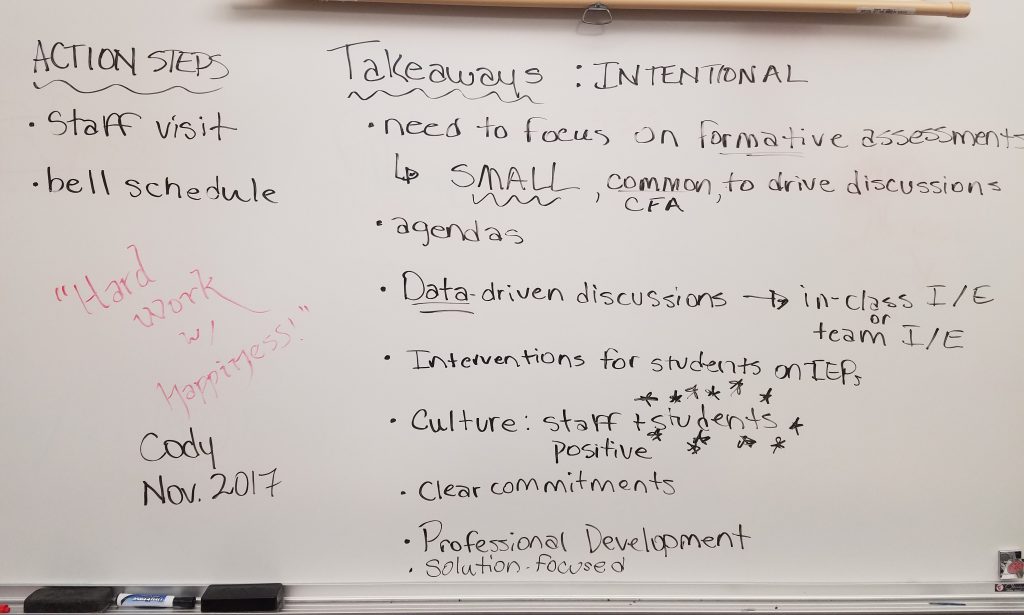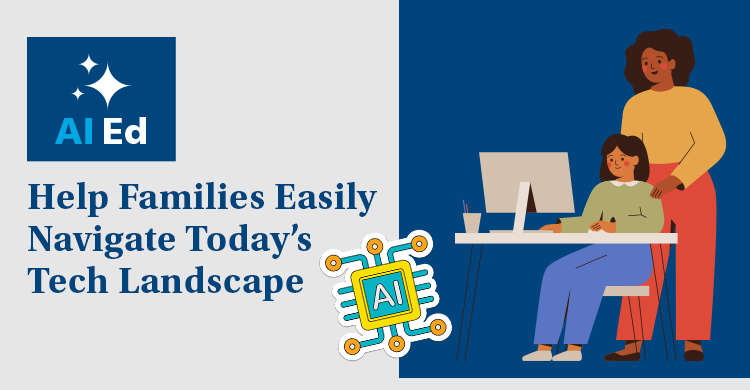Based on the book Inside PLCs, this is part four in a series on real-world implementations of professional learning communities. To view all posts, see the Inside PLCs blog series.
Several years ago, a group of visiting teachers from Cody, Wyoming, came to spend the day with a neighbor, hoping to gain some insights and advice. That neighbor was Sheridan County School District #2 (SCSD2). They were there for a very good reason. SCSD2 has a national reputation for having struggled mightily academically over a period of years, followed by dramatic turnarounds in student performance. In fact, in several key areas they went from being some of the lowest-performing schools in the state to some of the highest, resulting in a number of schools achieving national Blue Ribbon status. Cody, along with many other schools over the years, have come to SCSD2 to learn about their magic touch.
So, what changed in SCSD2? What’s their secret?
The results in SCSD2 improved dramatically in a short period of time. So, what changed? If you ask them, everything. They changed their culture, their habits, their attitudes, and their actions. They changed their expectations, their pursuit of rigor, and of course, their results. What’s their secret? What did the educators from Cody come to see? The answer is simple: a deep, faithful, heartfelt, and sustained implementation of the professional learning community (PLC) process.
Observations of the PLC at the end of the day
At the end of the day of observations, the guests from Cody had a whiteboard brainstorming session. They took notes on what the team of educators observed from their day watching a PLC live and in action.
The picture above captures several of their takeaways and shines a light on some of the deep and sustaining benefits of a well-implemented professional learning community.
As their debriefing session continued, the educators marveled at what they had seen and struggled to describe the culture of this highly successful organization. To their credit, one of the guests was able to come away with the phrase that best described the SCSD2 culture and the way they do their business daily: “Hard work, with happiness.”
Hard work with happiness—first, the hard work
The guest educators from Cody marveled at how hard the educators from SCDS2 worked within their PLC. It wasn’t just the fact that they were busy. It was that they were deeply engaged and embedded. They observed, for example, teachers working diligently to prepare for team meetings, bringing together assessment data, and preparing to make larger contributions to the entire group. While most educators are used to attending meetings, the PLC team meetings represented a different level of preparation, engagement, and then postmeeting follow through.
For those who are observers of the PLC process, this observation should come as no surprise. When you get beyond some of the essential overarching elements of what it means to be a PLC, there are obviously a number of steps the teams must take to deeply embed these practices within the school. Sadly, some districts don’t have success in implementing PLCs because they simply never invest in the hard work associated with a deep and sustaining implementation. They give only cursory observations of team processes and expectations and fail to establish the all-important reciprocal accountability wherein professionals hold each other accountable for the work within the team that’s essential for reshaping the results (Dufour, Reason 2015).
Clearly, SCSD2 is successful due to outstanding leadership at the superintendent and board level and thanks to high-energy principals alongside dedicated teachers and staff. However, as the old saying goes, working hard is good. Working smart is even better. In this case, SCSD2 has been successful in changing their student achievement results because they have worked extremely hard in remaining faithful to the organizing principles associated with the PLC.
Working hard each year by starting over
One of the most interesting observations of SCSD2’s implementation of PLCs over the years is their dedication to the basics and their willingness each year, by some measure, to start over. Each fall, leadership at SCSD2 starts the year off by once again defining what it means to be a PLC. They take the time in each building to once again establish teams; manifest mission, vision, values, and norms; and to remind each team member of his or her responsibilities. They revisit the wisdom and strategy of SMART goals, and they set their course for the year.
Granted, this process may not take them as long as it did a few years ago. But they absolutely never skip this step. This is a process in remaining loyal to the essence of what it means to be a PLC. It helps keep implementers humble and allows otherwise distractible human intentions to be focused where they belong—in this case, the deep and sustaining implementation of PLCs and the pursuit of ever-increasing levels of student achievement and results for every student. And in SCSD2’s case, they do mean every student—indeed, another hard-work commitment.
What about the happiness?
The educators at Cody couldn’t help but marvel at the degree to which the educators at SCSD2 seemed to be having fun while simultaneously working so hard. They reported that they saw staff members laughing regularly in their team meetings, smiling at one another, and engaging in what appeared to be an awful lot of fun, collegial conversation.
Let’s examine why the faithful and comprehensive implementation of PLCs might indeed lead to deeper levels of happiness. And let’s evaluate the merits of this potential outcome.
Why are they so happy?
We were meant to work together
As a species, human beings tend to survive the elements with greater success when we learn to work together toward mutual benefit (Reason 2010). It was true when humankind discovered fire, and it’s true for teams working together within a PLC. In fact, there is legitimate neurological evidence that when we work together, our brains become more stimulated and engaged and can result in the release of more endorphins, making us feel good.
So, if you’re keeping score, having teams that work together successfully within a PLC can create a neurological response that rewards you by making you feel good.
Affiliations, progress, and purpose
Psychologically, human beings tend to respond well when they have positive affiliations, consistently make progress, and have a purpose for their existence (Reason 2014). Isolated teens join street gangs, play sports, engage in Scouts, and get addicted to web-based video games because each of those activities provides affiliation, illustrates demarcations of progress, and assigns work around a common purpose (Reason 2014).
There’s safety in numbers
In schools that remain highly isolated, educators can feel quietly intimidated by whatever changes are going on around them. In a PLC, there are always teammates there to help diagnose the challenges in front of them and to work together to respond (Reason 2010). Indeed, the old adage that there’s safety in numbers is something that our inner psyche no doubt understands, and we tend to feel better when we are in a group. Thus, the educators at SCSD2 are happier, because they feel safer together.
Happy—not happy-go-lucky
In conversations with educators at SCSD2, they agree that they are generally a happy group. However, they would not describe themselves as happy-go-lucky. In fact, probably a deeper and more profound observation of the climate and culture of SCSD2 would revolve around the fact that the educators there perhaps appear happy because they are professionally fulfilled. Here are a few observations of that fulfillment and why it’s evident at SCSD2.
They disagree and expect to do so
One of the gifts that came by working at a PLC over a period of years at SCSD2 is learning that human beings working together will always result in disagreements. Because a district like SCSD2 has been at it for a number of years, they realized that these disagreements are actually healthy and can lead to more significant innovations. Conversely, school districts that remain largely isolated and don’t embrace the PLC concept may find that their isolated practices leave them largely unprepared when differences of opinion emerge. As a result of this ability to thoughtfully disagree and debate ideas instead of each other, no doubt, greater happiness is allowed to emerge.
They realize they need to live and work together, forever
We tend to make different decisions when we realize that the steps we’re taking may have a significant impact on the people we live with. In the case of PLCs, wherein the commitment to the concept is unwavering, participants learn that learning to work together simply makes sense. How many school-improvement initiatives over the years have been derailed by clusters of detractors who quietly believe that by derailing the process, the meetings and the effort will simply go away? In the case of a school district like SCSD2, it is universally understood that the concept of the PLC is the prism from which they work, and that will not change. Arguably, what’s systemic certainly brings a degree of psychological certainty that allows team members to think differently about their institution, their teens, their work, and each other.
They realize the commitment to serve every student, every day—and the fulfillment that follows.
We’ve all read the mission statements in schools that commit to serving every student, every day. In reality, most of our systems are designed to keep teachers isolated, to sort students out by those who can achieve and those who can’t, and to actually only really support those students who comply and are agreeable.
One of the most important undergirding elements of a PLC is that both the commitments and the strategies for filling those commitments put schools in a position where working together in continuous cycles of reciprocal accountability is nonnegotiable. They put themselves in a position where they truly can attend to the essential learning needs of every student.
While this is both efficient and effective, it’s also altogether satisfying at both the personal and professional level. No one gets into the profession hoping to sort students out or being okay with students falling through the cracks. The system of PLCs helps to ensure fulfillment of that professional obligation. It also serves to warm the hearts of educators whose optimism is fueled by working together and realizing that meeting the needs of all students, every day doesn’t have to be a pipe dream. And happiness will follow.
Read the next post in the series on investing and reinvesting in PLCs for real results.
References:
Reason, C. (2014). Stop leading like its yesterday: Key concepts for shaping today’s school culture. Bloomington, IN: Solution Tree Press.
Reason, C. (2010). Leading a learning organization: The science of working with others. Bloomington, IN: Solution Tree Press.








